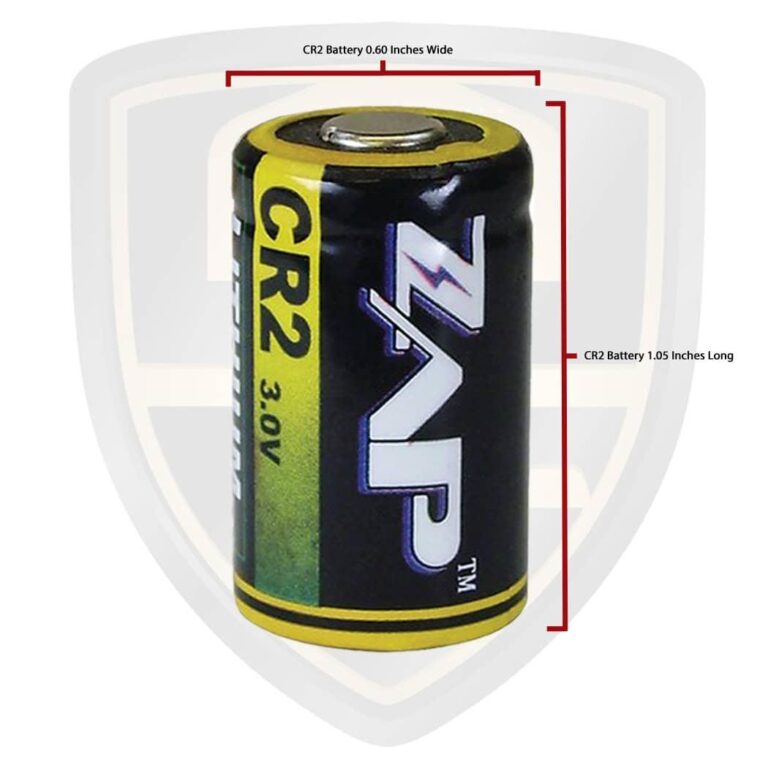Table of Contents
- Understanding Different Stun Gun Battery Types and Their Performance
- Signs Your Stun Gun Battery Needs Replacement and Safety Precautions
- Essential Tools and Preparation for Replacing Your Stun Gun Battery
- Step-by-Step Guide to Safely Replace and Maintain Your Stun Gun Battery
- Future Outlook
Understanding Different Stun Gun Battery Types and Their Performance
When it comes to powering stun guns, understanding the types of batteries available can significantly impact both the device’s effectiveness and lifespan. Most stun guns utilize rechargeable lithium-ion batteries for their superior energy density and lightweight design, providing a powerful charge that ensures reliable performance without the bulk of older battery types. Alternatively, some models still depend on alkaline batteries, which are more accessible but tend to drain quickly and lack consistent power output. For high-frequency users, premium nickel-metal hydride (NiMH) rechargeable batteries might offer a balanced solution with their ability to hold charge longer than alkalines at a modest cost.
Performance can also vary depending on the battery’s capacity (measured in milliamp-hours, or mAh) and the stun gun’s voltage requirements. Batteries with higher mAh ratings typically allow for more shock cycles and longer usage between charges, making them ideal for extended self-defense preparedness. To maximize efficiency and battery life, users should consider the following:
- Battery Compatibility: Always use batteries recommended by the manufacturer to avoid damaging your device.
- Regular Charging: Keep rechargeable batteries topped up, especially for lithium-ion types, to prevent deep discharge which can shorten battery life.
- Storage Practices: Remove batteries if the stun gun won’t be used for an extended period to prevent leakage and corrosion.
- Environmental Impact: Dispose of used batteries responsibly and never mix battery types in the device.
Signs Your Stun Gun Battery Needs Replacement and Safety Precautions
Knowing when to replace your stun gun’s battery is crucial for ensuring it functions when you need it most. Some common indicators include inconsistent or weak electric pulses, a noticeable drop in voltage output, or the stun gun failing to activate despite a full charge. Additionally, if your device takes significantly longer to charge than usual or shows signs of battery swelling or leakage, it’s a clear sign that the power source is compromised and must be replaced immediately.
While handling your stun gun during battery replacement, safety should be your top priority. Always disconnect the device from any power source before attempting to open it. Avoid touching the electrodes to prevent accidental shocks, and wear insulated gloves as a precaution. Keep the stun gun away from flammable materials, and dispose of the old battery responsibly, following local regulations for hazardous waste. Taking these steps will help ensure a smooth, safe transition to a new battery, maintaining your device’s reliability and your personal safety.
Essential Tools and Preparation for Replacing Your Stun Gun Battery
Before diving into replacing your stun gun battery, it’s crucial to have all the necessary tools and materials on hand. Equip yourself with a small Phillips or flathead screwdriver to open the battery compartment, a clean cloth to handle delicate components, and a pair of tweezers for precise battery placement. Additionally, ensure you have the correct replacement battery, which matches your stun gun model specifications to avoid compatibility issues. For added safety, work in a well-lit area, preferably on a non-conductive surface to prevent any accidental discharge or short-circuits.
Preparation doesn’t stop at tools; it extends to personal safety and device readiness. Always make sure your stun gun is turned off and disconnected from any power source. Discharge any static buildup by touching a grounded metal object before handling internal components. Keep your workspace free of clutter and distractions to maintain focus. Lastly, consider reviewing the stun gun’s user manual or technical guide – many manufacturers include specific instructions or warnings that can save you time and prevent damage during the replacement process.
Step-by-Step Guide to Safely Replace and Maintain Your Stun Gun Battery
Before embarking on the battery replacement process, ensure your stun gun is completely powered off and disconnected from any charging source to prevent accidental discharge. Find a well-lit workspace and gather essential tools such as a small screwdriver, replacement battery, and safety gloves. Begin by carefully opening the battery compartment, typically located on the handle or rear of the device, taking care not to force or damage any clips or screws. Once accessed, gently remove the old battery-observe its orientation and take note of the positive and negative terminals to guide proper installation of the new battery.
After inserting the new battery, double-check the connections to confirm they are secure. Then, close the battery compartment firmly without over-tightening screws which can strip threads or damage the casing. It is highly recommended to test the stun gun in a controlled environment to verify functionality before relying on it for personal safety. Finally, maintain your device by regularly inspecting the battery for corrosion or leakage and keeping it charged as per manufacturer guidelines-this extends the life of your stun gun and ensures it’s always ready for use.
Future Outlook
Replacing the battery in your stun gun is a straightforward process when you understand the types of batteries available and follow the proper steps. Whether you choose rechargeable lithium-ion batteries or traditional AA cells, ensuring you use the right type and handle your device carefully will keep your stun gun reliable and ready for use. Regular maintenance, including timely battery replacement, not only extends the life of your device but also guarantees optimal performance when you need it most. Keep this guide handy, and you’ll be able to confidently maintain your stun gun’s power and effectiveness for the long haul.Check Our Other Blogs
- StunGun – Your Trusted Source for Stun Guns, Laws, and Self-Defense Tips
- PepperSprayLaws – Your Trusted Resource for Pepper Spray Information
- StunGunLaws – Your Trusted Guide to Stun Gun Legality and Safety



